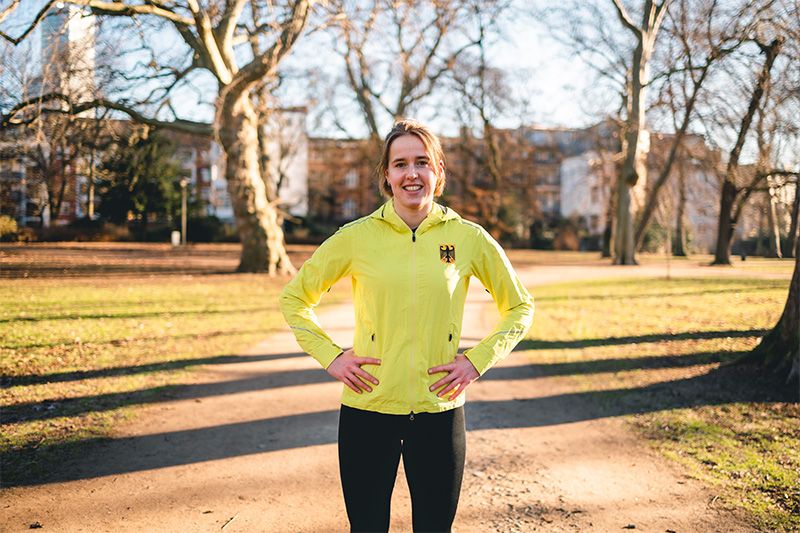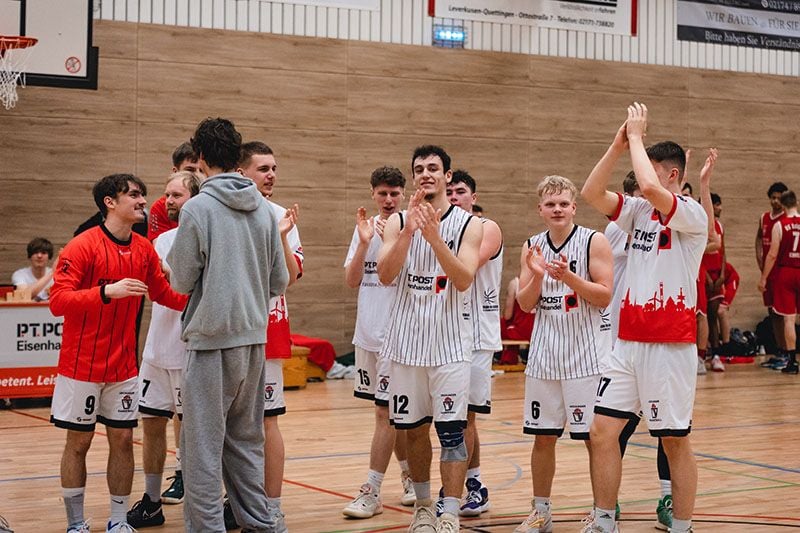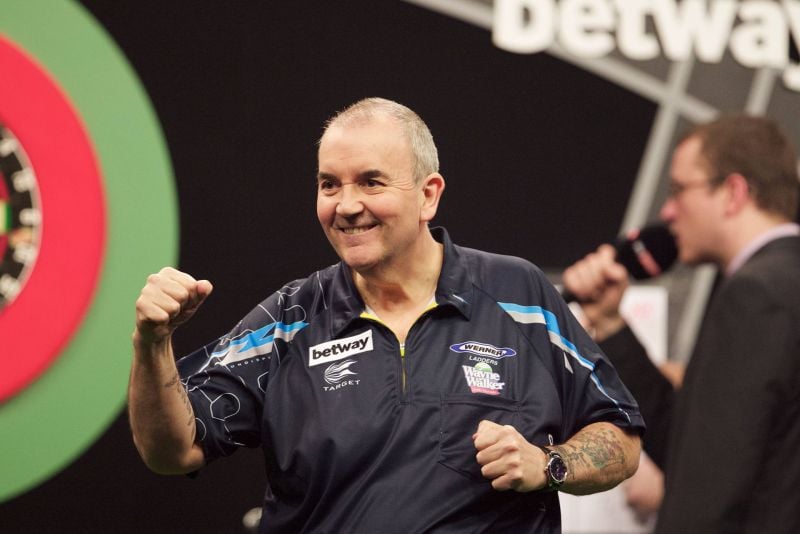Knee pain after jogging - causes and solutions

The runner's knee (ITBS)
1.1 What is runner's knee anyway?
1.2 How does runner's knee develop?
1.3 Runner's knee symptoms - How does it manifest?
- You have pain so severe with exertion, that you can barely walk and even slow walking is affected.
- The pain is sharp.
- You feel the pain mainly in the knee area and on the outside of the knee, but it can also radiate to the hip or calf.
1.4 How do I find out if I have runner's knee?
- There is swelling at the lateral femoral condyle and the swelling hurts with even light pressure.
- The tractus iliotibialis is tight and tense.
- Flexion and extension of the knee with simultaneous rotation of the lower leg cause pain.
- There is knee malalignment leading to bow or knock knees.
1.5 How can I treat runner's knee?
- Take a break from sports. This does not mean that you should not do any sports at all. Just avoid the movements that put stress on your knee.
- Cool your knee.
- Do stretching exercises for your leg muscles and use a foam roller, for example. This way you can make the tense tendon plate more supple and lengthen it a bit. This will reduce the pressure in the knee and the pain will subside.
- You can take painkillers from the NSAID group, such as ibuprofen, to get out of a potential pain spiral. Important: Remember that painkillers can affect your perception and body awareness. Many athletes have worsened their symptoms like this because they didn't get pain feedback and so continued to stress their bodies instead of giving them rest.
- Manual therapy can help lengthen the tractus iliotibialis and stretch the muscles around the tendon plate.
- Orthotics can be used to support your knee and reduce the strain of walking and movement.
- If the pain is severe and the tissues are inflamed, administration of cortisone can provide quick relief. Your doctor can inject this anti-inflammatory medication under the tendon plate. In the best case, this should only be done after you have exhausted all so-called "non-invasive" means (i.e., no injections) beforehand.
- Check your equipment: are your running shoes optimal? Do you need insoles? Are the cleats of your cycling shoes well adjusted?
- Do a movement analysis while running, walking, jumping or squatting. It can provide information about possible misalignments or weaknesses.
- Train the abductors of the hip, the small glutes and the core. This will help you stabilize your hip in the frontal plane. This will reduce traction on the tractus iliotibialis and take pressure off the tendon plate.
- Strengthen your calf muscles to stabilize your foot posture.
- Improve intramuscular coordination through maximum strength and so-called "eccentric" training. However, you should only do this accompanied in the gym or with your trainer.
1.6 Runner's knee - How can I prevent it?
- Improve your foot and knee alignment through targeted strength training.
- Strengthen your hip abductors to avoid hip tipping when you walk, which creates less work for the tractus iliotibialis.
- Increase the mobility of your lower extremity, focusing on the hip.
- Massage the tractus iliotibialis regularly yourself with your hands or go to physical therapy. You can also use a foam roller to counteract hardening of the tendon plate.
- Check your running equipment. For example, get rid of shoes that are very worn out. Buy good running shoes from a specialist store and get advice. As motivation, you can also put together a customized running outfit. You can find running jerseys to design yourself here.
- Do not increase the amount and intensity of your training too quickly. Otherwise you may overload the tractus.
| Physiosport Cologne are the experts for physiotherapy, osteopathy and training/sports therapy. They combine their range of services with an efficient, interdisciplinary medical network. Innovative therapy concepts, many years of experience in competitive sports, modern and centrally located locations and a qualified and dynamic team of therapists get you back into everyday life after injuries, operations and accidents, but also back into competitive sports. |

The patellar tendinitis
2.1 What is patellar tendinitis anyway?
The so-called "patellar tendinopathy", also known as "jumper's knee", is a chronic, painful and degenerative disease of the patellar tendon, mainly caused by overuse. Patellar tendinopathy usually develops as an insertional tendinopathy at the lower edge of the kneecap, where the bone joins the tendons. However, the knee disease can also develop at the base of the tibia (lat. tibia) or above the patella tendon, the tendon of the quadriceps.
2.2 How does patellar tendinitis develop?
Patellar tendinopathy is mainly caused by wear and tear of the patellar tendon due to overuse. Typically, it is mainly athletes who suffer from this knee disease who put a lot of strain on the patellar tendon, e.g. by doing a lot of jumps or abrupt stop-and-go movements. These movement patterns are found, for example, in soccer, basketball or tennis. However, jumper's knee can also occur when running under high stress.
Important: Patellar tendinopathy develops primarily, because the body cannot regenerate due to repetitive strain. The load is then so great, that the natural regeneration processes are no longer sufficient and the patellar tendon degenerates. This degeneration is then the cause of the pain and the main problem of the disease and not, as many assume, an inflammation. (However, this can be added in the advanced stage).
Overloading of the knee is mainly caused by so-called "repetitive mechanical stress". This means that frequent jumping, fast running and abrupt stopping severely irritate the patellar tendon, causing micro tears in the tendon, thus damaging the tendon fibers and causing insufficient regeneration to repair the tissue. Professional athletes are more affected due to a higher intensity of training and competition. Unfavorable conditions such as hard surfaces or uneven terrain can increase the stress on the patellar tendon.
2.3 Patellar tendinitis symptoms
- You have pain in the front of your knee when you climb stairs or extend your leg.
- The pain does not go away and keeps recurring with the movements I just mentioned.
- You feel pain when you stretch your leg again after a long bending posture.
2.4 Patellar tendinitis diagnosis
- You do competitive sports and play soccer, basketball or tennis. Or you run very intensively.
- The pain typical of patellar tendinitis can be specifically provoked by certain movements.
- An MRI or sonography of the knee is performed, which reveals edema or deposits of calcium salts, as well as partial ruptures (=thinning tendons).
2.5 What helps with patellar tendinitis?
- Pause sports that stress the patellar tendon. Continue doing sports that are gentle on the tendon.
- Cool the affected area to relieve the pain.
- Go to physical therapy sessions.
- Do stretching exercises and use a Foamroaller to reduce the pull on the quadriceps.
- You can take anti-inflammatory painkillers, so-called NSAIDs (non-steroidal anti-inflammatory drugs). These include ibuprofen, for example. The painkillers can interrupt the pain spiral.
- A doctor can treat you with autologous blood plasma to promote healing processes.
- Shock wave therapy can be used to help the tendon heal.
- Pain reduction phase: Isometric exercises. These are static exercises in which the muscle is tensed in a constant position and for which you don't need any aids. The exercises are therefore quite simple. These include: 60° wall sit, 30 seconds both legs to start. Over time, increase the angle and duration. Finally, perform the exercises with one leg.
- Loading phase: Eccentric or isometric exercises. This means strength training in which the muscle lengthens under tension and you slowly decelerate weights. You are therefore doing what is known as "heavy slow resistance training".
- Plyometric and sport specific exercises: You start with simple jumps and as you progress you become more reactive. This means that you have shorter and shorter contact with the ground while jumping.
2.6 How can I prevent patellar tendinitis in the future?
- Ensure good mobility of the lower extremity. This will prevent overloading of the quadriceps or excessive wear of the patellar tendon.
- Do strength training to avoid foot or knee misalignments while jogging.
- Perform eccentric exercises regularly as part of functional strength training. It's best to include exercises that are specific to your sport.
- Check your running gear. Throw away worn-out shoes and seek expert advice when buying running shoes.
- Don't increase your training volume and intensity too quickly.



.png)









































































